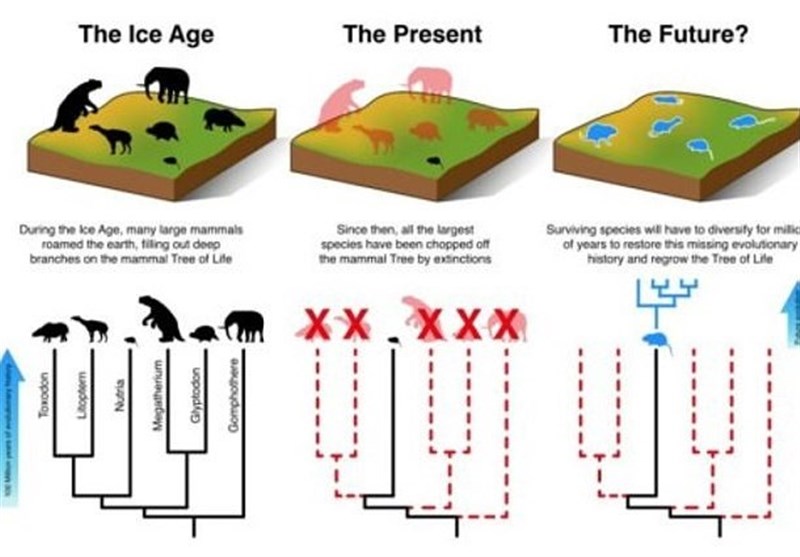Scientists Warn Extinction Now Outpaces Evolution
TEHRAN (Tasnim) - A new study warns that humans are now driving mammals to extinction at rates much faster than Earth’s species may be able to recover from.
Even in the best-case scenario, worrying new estimates suggest it will take upwards of 5 million years for mammal species to bounce back to current biodiversity levels following the extinctions expected to occur over the next five decades.
The researchers say evolution will not be able to keep up with the rate by which mammal species are dying out unless we ramp up conservation efforts, Daily Mail reported.
While Earth has experienced five mass extinctions in its history, the current phenomenon is unique in that it is caused by humans, not natural disasters.
In the new study, researchers from Aarhus University and the University of Gothenburg used an extensive database of mammals both in existence today and those that have gone extinct since the rise of Homo sapiens to assess the future of mammalian biodiversity.
Large mammal species, the researchers warn, are disproportionately at risk of dying out altogether.
‘Large mammals, or megafauna, such as giant sloths and saber-toothed tigers, which became extinct about 10,000 years ago, were highly evolutionarily distinct,’ says palaeontologist Matt Davis from Aarhus University, who led the study.
‘Since they had few close relatives, their extinctions meant that entire branches of Earth’s evolutionary tree were chopped off,' Davis says.
‘There were hundreds of species of shrew, so they can weather a few extinctions. There were only four species of saber-toothed tiger; they all went extinct.’
According to the study, it will take mammals 5 to 7 million years to recover from the biodiversity losses they have incurred since the emergence of modern humans.
And, it would take 3 to 5 million years to reach the levels they’re at now, even if humans cease destructive practices.
In the next 50 years, we could lose several species, with the black rhino and Asian elephant both feared to be at risk of dying out before the end of the century.
‘Although we once lived in a world of giants: giant beavers, giant armadillos, giant deer, etc, we now live in a world that is becoming increasingly impoverished of large wild mammalian species,’ says says Professor Jens-Christian Svenning from Aarhus University, who heads a large research program on megafauna.
‘The few remaining giants, such as rhinos and elephants, are in danger of being wiped out very rapidly.’
The researchers say the data could be used to identify and prioritize at risk species before it’s too late.
‘It is much easier to save biodiversity now than to re-evolve it later,’ Davis says.






